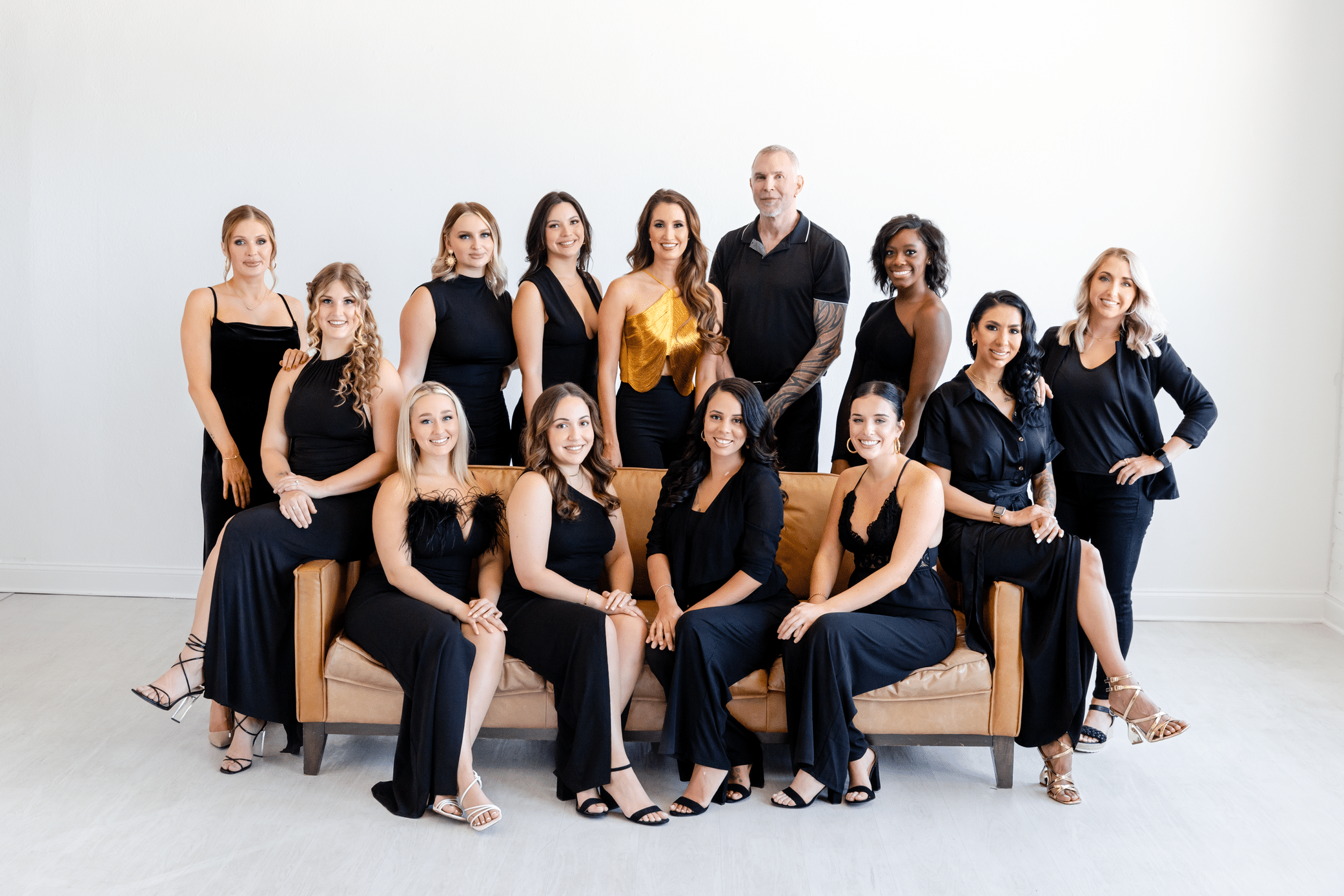We all have areas where fat has accumulated and is really hard to get rid of, areas such as the abdomen and the flanks. What if you could take that fat from those unwanted areas and move it to an area where you would like more contour and volume?
You’d have facial fat grafting, a great way for patients to add volume to sunken cheeks or to fill out smile lines or under eye tear troughs.
Board Certified Plastic Surgeon Dr. Walker performs fat grafting surgery for our patients from Dallas and the surrounding areas. To learn more about the procedure or to determine whether you are a candidate, please call (972) 661-5077 from our Dallas office today!
What is facial fat grafting?
Facial fat grafting, also known as fat transfer or fat injection, is a cosmetic surgical procedure that involves removing excess fat from one part of the body, such as the thighs or abdomen, and injecting it into the face to restore volume and improve facial contours.
What issues can fat transfer improve on the face?
The face is especially prone to showing signs of volume loss. There are a few different factors at work in this. The main culprit is declining collagen production. Every year after we have our 20th birthday our body produces one additional percentage point less collagen. Collagen provides the underlying support structure for our skin, keeping it firm and plump. So, take away 30 percent when you’re 50 and you understand why your facial skin is now prone to sagging and developing deep wrinkles. The skin also thins as we age. And our perennially sunny Dallas skies don’t help.
Fat transfer returns volume. That is the main goal. By returning volume to areas that have sagged and sunken, this can dramatically change the patient’s facial age.
Who is a good candidate for fat grafting?
Dr. Walker uses fat grafting on the face to return volume to laugh lines, smile lines, crow’s feet, under eye hollows, sunken cheeks, the lips, and to correct acne scarring.
Obviously, candidates need to have areas where they’ve lost volume, such as their cheeks. Good candidates also need to have fat to harvest. This is usually taken from the abdomen, upper thighs, or flanks.
But fat grafting isn’t for everyone. Fat transfers return volume to an area but cannot return enough volume if the patient has too much loose, sagging skin. If a patient has excessive loose skin, a facelift with Dr. Walker may be a better procedure. During your consultation, Dr. Walker will examine your unique situation and tell you if she thinks fat transfer will work well for you.
How is facial fat grafting done?
The idea of these procedures with Dr. Walker is to use the patient’s own fat to return volume to areas of the face that have sagged, sunken, and lost volume. Fat transfers offer a permanent alternative to the use of dermal fillers.
This is a three-step procedure.
1. Harvesting
Your unwanted fat is harvested from the donor site. Once the site is selected, Dr. Walker uses tumescent liposuction to remove the fat from the area. First, a saline solution that also contains lidocaine and epinephrine is injected into the area. This acts to constrict the fat pockets, making them easier to remove. Plus, lidocaine acts as a local anesthetic and the epinephrine constricts blood vessels for less blood loss and bruising.
2. Purification
Once the fat is removed, the fat cells are separated from the blood, tissue, and other fluids. The purified fat is then ready to be injected back into the target areas.
3. Placement
The purified fat is now injected into the target areas with a thin cannula. As Dr. Walker withdraws the cannula from an injection site, a line of fat tissue cells is deposited. In larger areas such as the cheeks, she may create a grid of grafted fat. Otherwise, for areas such as smile lines, the line may simply follow the crease in the skin. In most cases, the grafted areas are then lightly massaged to provide natural contour.
What is recovery like after facial fat grafting?
You will have two recovery areas with fat transfers, but neither involves a difficult recovery. Your donor area will have some bruising and swelling for a week or so, but this is minimal. It isn’t to the degree that accompanies a stand-alone liposuction procedure. There is little, if any, pain involved with the donor area.
The transfer areas on the face will have some moderate swelling and there will also be some bruising. It’s important to use a cold compress for the first hours you are home to minimize this. The swelling will likely increase until about the third day and will then begin to subside. Depending on the amount of fat transferred, patients will generally be able to return to work and normal social activities after about one week. It’s not a bad idea to buffer your procedure across two weekends, if possible. If you still have any lingering bruising it will be easily covered with makeup. The transfer areas won’t be overly painful; most patients don’t require anything other than over-the-counter pain medication. Swelling is the issue.
Dr. Walker will see you first in five to seven days, and then again in three weeks. These appointments will let her see how the fat is “taking,” meaning how much is connecting to blood vessels in the area.
How long will the results from my facial fat transfer last?
Once fat cells acquire a blood supply, they remain in place, just as they were in their original location before the transfer. These are permanent changes.
But there can be variation with fat transfers because not all the fat cells Dr. Walker transfers will successfully “take,” meaning they will acquire blood supply. If the transferred fat cells don’t take, they will simply be absorbed and removed from the body.
For this reason, Dr. Walker over-injects the amount of fat needed initially, as this allows compensation for the loss of up to 40 percent of the transferred fat cells.
What are the risks involved with facial fat transfer?
Because you’re having your own fat injected back into your face, reactions don’t happen. Otherwise, risks with the liposuction portion of a transfer are the same as with any surgical procedure, reaction to anesthesia, bleeding, infection, changes in nerves sensation, and the like. These are rare with fat grafting.
Some patients find that over time their bodies absorb much of the grafted fat. This is not true of most patients and the amount of fat that takes and that which doesn’t varies widely. Dr. Walker’s expertise in handling and injecting the fat is important here. She has extensive experience with both the liposuction and transfer facets of these procedures, which can make a huge difference in the results, including the amount of fat that successfully takes.
Still, the biggest risk, if you want to call it that, is that you may need another fat grafting session to provide more filling once your results settle in.
Schedule a Facial Fat Grafting Consult in Dallas, TX!
If you are interested in learning more about the Facial Fat Grafting procedure, or if you wish to determine whether you are a candidate, please do not hesitate to contact Plastic Surgery Center of Dallas today! Call (972) 661-5077 or fill out the form on our contact page, and our staff will help you set up your personalized appointment with Dr. Rachel Walker!




